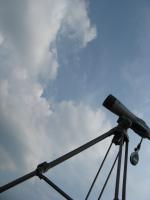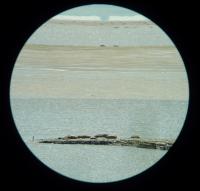How was it done?

Methods
Study area: Eems-Dollard, Netherlands
4 sandbanks (WI, S1, S2, S3) [shaped lines on map]
Time frame: May – July 2010 (week 20 - 29)
Position of observers: situated slightly behind the dyke [star on map]
Observation time: 6 hours during low tide/day, 4 days/week
In total: 40 days; 227 hours
Sampling methods:
- rotating scan sampling (Abundance)
- scan sampling, continuous sampling (Mother-pup interaction)
- continuous sampling (Disturbance)

Material
- Telescope and binoculars,
- stopwatch,
- worksheets for data collection,
- weather adjusted clothes
… and a lot of patience to do observations during every weather condition, e.g. storm or extreme heat.
It´s not that easy as it looks like... :-)
How did it look like?

View through a telescope
So close and yet so far ... (distance ≤100m)
Responsible for this page:
Director of undergraduate studies Biology
Last updated:
05/08/11
